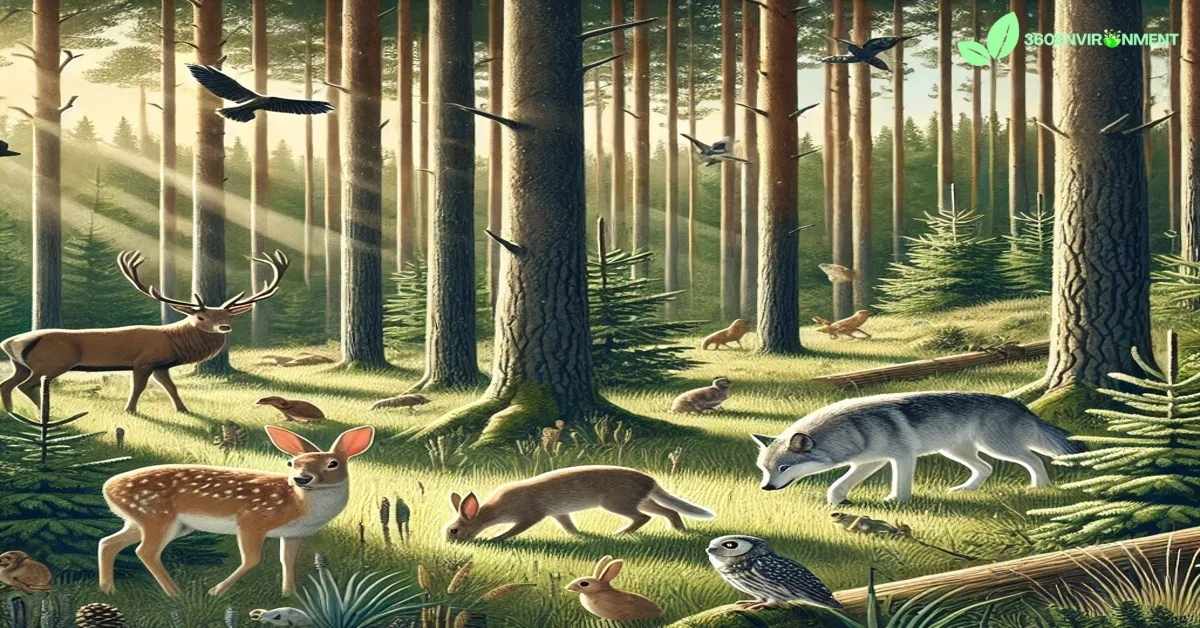Coniferous forests, also known as taiga or boreal forests, represent one of the largest terrestrial biomes in the world. Spanning vast areas of North America, Europe, and Asia, these forests are primarily composed of cone-bearing trees such as pines, spruces, and firs. The cold climate, nutrient-poor soils, and short growing seasons shape a unique environment, influencing the coniferous forest animals that inhabit it.
Despite the challenging conditions, a remarkable array of coniferous forest animals has adapted to thrive in these ecosystems. From large mammals to small birds, insects, and amphibians, the biodiversity of this ecosystem plays a crucial role in maintaining its overall health. In this article, we will explore the diverse species that call the coniferous forest home, focusing on their adaptations, roles in the ecosystem, and the environmental challenges they face.
1. Overview of Coniferous Forests
Before delving into the specifics of coniferous forest animals, it is important to understand the characteristics of these forests and the conditions in which the coniferous forest animals live.
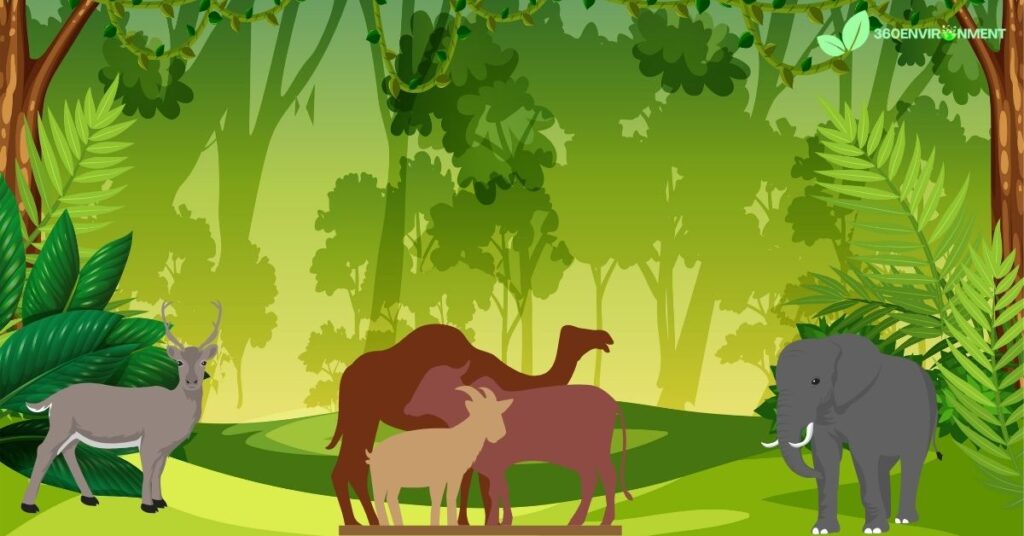
1.1. Climate and Location
Coniferous forests are predominantly located in the northern hemisphere and are characterized by long, cold winters and short, mild summers. The average temperature in these regions ranges between -40°C in the winter and 20°C in the summer, with significant variations depending on latitude and elevation.
Countries with vast coniferous forests include Canada, Russia, Finland, Sweden, Norway, and parts of the United States. Some coniferous forests also exist in mountainous regions of the southern hemisphere, such as New Zealand and Chile.
1.2. Vegetation and Structure
The trees in coniferous forests are primarily evergreen, meaning they retain their leaves (or needles) year-round. This adaptation allows them to photosynthesize whenever conditions permit, even during winter. Common tree species include pines, spruces, firs, hemlocks, and cedars.
The structure of the forest is typically divided into layers:
- Canopy: The uppermost layer formed by mature trees.
- Understory: A layer of shrubs, young trees, and smaller plants.
- Forest Floor: The ground layer covered with mosses, lichens, and decomposing plant material.
These layers create a variety of habitats that support different species of coniferous forest animals, each adapted to specific ecological niches.
2. Mammals of the Coniferous Forest
Mammals in coniferous forests exhibit a range of adaptations that allow them to survive the harsh conditions, from thick fur for insulation to behavioral changes like hibernation and migration. The diversity of coniferous forest animals within the mammal group includes some of the most iconic wildlife of the northern forests.
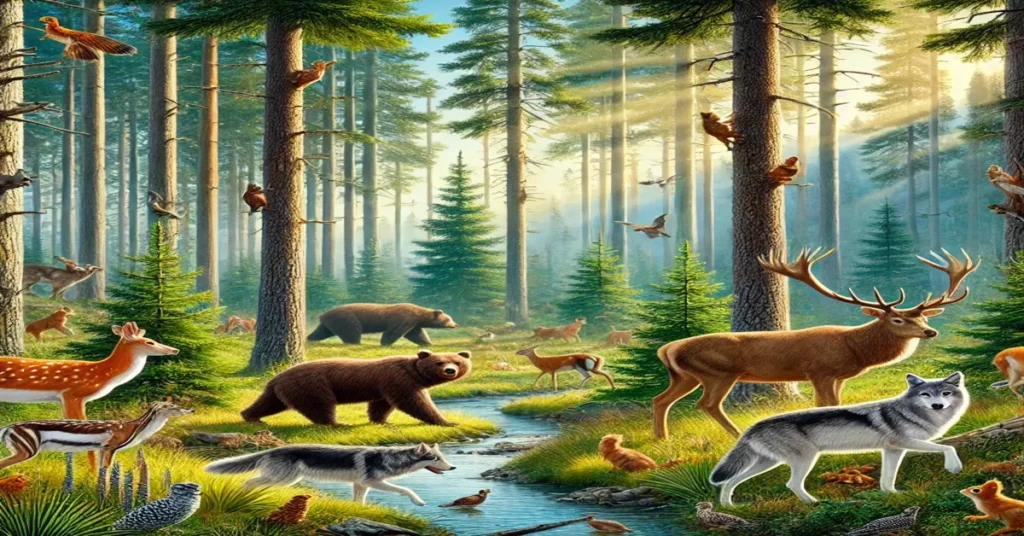
2.1. Large Mammals
2.1.1. Moose (Alces alces)
The moose is one of the largest coniferous forest animals. With its long legs and massive body, the moose is well-adapted to traversing deep snow and thick underbrush in search of food. Moose are herbivores and feed on a variety of plant material, including leaves, twigs, and aquatic plants.
During the harsh winter months, moose rely on their thick fur to keep warm and will often browse on coniferous trees such as fir and pine when other food sources are scarce.
2.1.2. Brown Bear (Ursus arctos)
Brown bears are another top predator among coniferous forest animals, particularly in regions like North America, Europe, and Russia. These omnivores have a diverse diet that includes berries, roots, fish, and small mammals. During the summer, brown bears accumulate fat reserves to prepare for hibernation, which helps them survive the long winter months when food is scarce.
2.1.3. Wolf (Canis lupus)
Wolves are highly social coniferous forest animals that live and hunt in packs. In coniferous forests, wolves play a vital role as apex predators, helping to maintain balance within the ecosystem by controlling the populations of herbivores like deer and elk. They are highly adaptable and have been observed hunting a wide range of prey, including small mammals and birds when larger prey is unavailable.
2.2. Small Mammals
2.2.1. Red Squirrel (Tamiasciurus hudsonicus)
Red squirrels are small but essential coniferous forest animals. These squirrels are known for their resourcefulness, gathering and storing food such as seeds and nuts to prepare for the winter. Red squirrels play an important role in forest regeneration by dispersing seeds, particularly those of coniferous trees.
2.2.2. Snowshoe Hare (Lepus americanus)
Snowshoe hares are well-known coniferous forest animals for their seasonal camouflage, which allows them to blend into their surroundings. This adaptation helps protect them from predators like lynxes and wolves. Snowshoe hares are herbivores and feed on grasses, ferns, and leaves in the summer, while they turn to bark, twigs, and buds during the winter months.
3. Birds of the Coniferous Forest
Birds are an essential part of the coniferous forest animals community, contributing to seed dispersal, pest control, and pollination. Many species have developed special adaptations to cope with the forest’s cold climate and limited food sources during the winter.
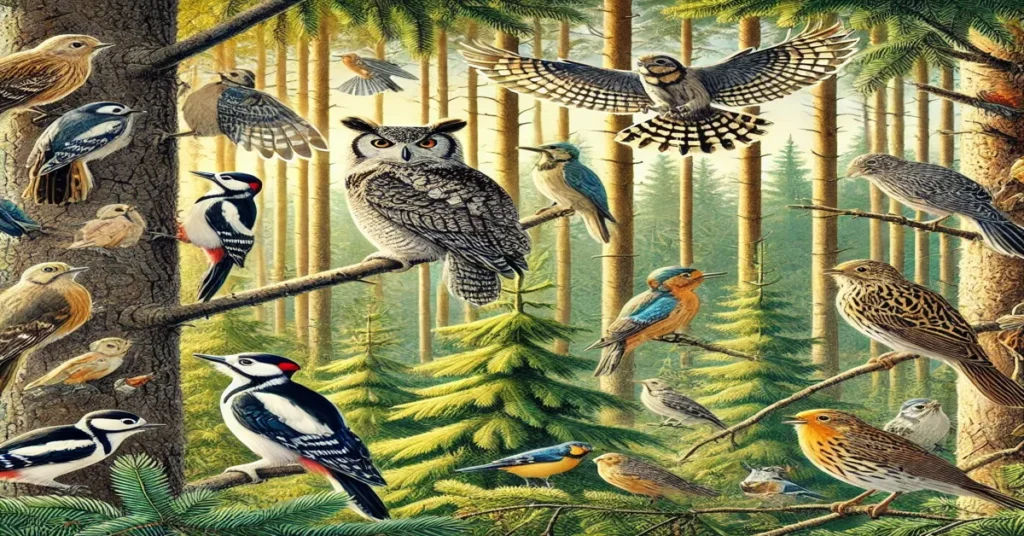
3.1. Permanent Residents
3.1.1. Northern Goshawk (Accipiter gentilis)
The northern goshawk is a powerful bird of prey found in coniferous forests across North America and Eurasia. As one of the predatory coniferous forest animals, it preys on a variety of animals, including birds, mammals, and insects. Its keen eyesight and sharp talons make it an efficient predator in dense forest environments.
3.1.2. Great Gray Owl (Strix nebulosa)
The great gray owl is another remarkable resident of the coniferous forest. These owls are well-adapted to cold environments, with thick plumage that provides insulation against freezing temperatures. Great gray owls are expert hunters, using their keen hearing to locate small mammals beneath the snow.
3.2. Migratory Birds
3.2.1. Bohemian Waxwing (Bombycilla garrulus)
Bohemian waxwings are medium-sized songbirds that breed in northern coniferous forests and migrate south during the winter. These birds are important coniferous forest animals that help spread seeds through their feeding habits.
3.2.2. Common Loon (Gavia immer)
The common loon, a distinctive waterbird, can often be found nesting in lakes within coniferous forests. Loons are one of the coniferous forest animals that are especially well adapted to aquatic environments, where they feed on fish and small invertebrates.
4. Amphibians and Reptiles of the Coniferous Forest
While amphibians and reptiles are less common among coniferous forest animals due to the cold climate, a few species have adapted to survive in these environments, particularly in moist, sheltered areas near streams and ponds.

4.1. Amphibians
4.1.1. Wood Frog (Lithobates sylvaticus)
The wood frog is a fascinating member of the coniferous forest animals group. These frogs have developed freeze tolerance, allowing their bodies to survive freezing temperatures during the winter.
4.1.2. Long-toed Salamander (Ambystoma macrodactylum)
Long-toed salamanders are nocturnal coniferous forest animals that prefer moist environments like streams, ponds, and forest floors under logs. Their long toes help them navigate the uneven terrain of the forest floor.
4.2. Reptiles
4.2.1. Common Garter Snake (Thamnophis sirtalis)
The common garter snake is one of the few reptiles found among coniferous forest animals. They are cold-blooded and rely on external heat sources to regulate their body temperature, making them more active during the warmer months.
5. Insects of the Coniferous Forest
Insects are often overlooked but are crucial coniferous forest animals. They contribute to the decomposition of plant material, pollinate flowers, and serve as a food source for many other forest animals.
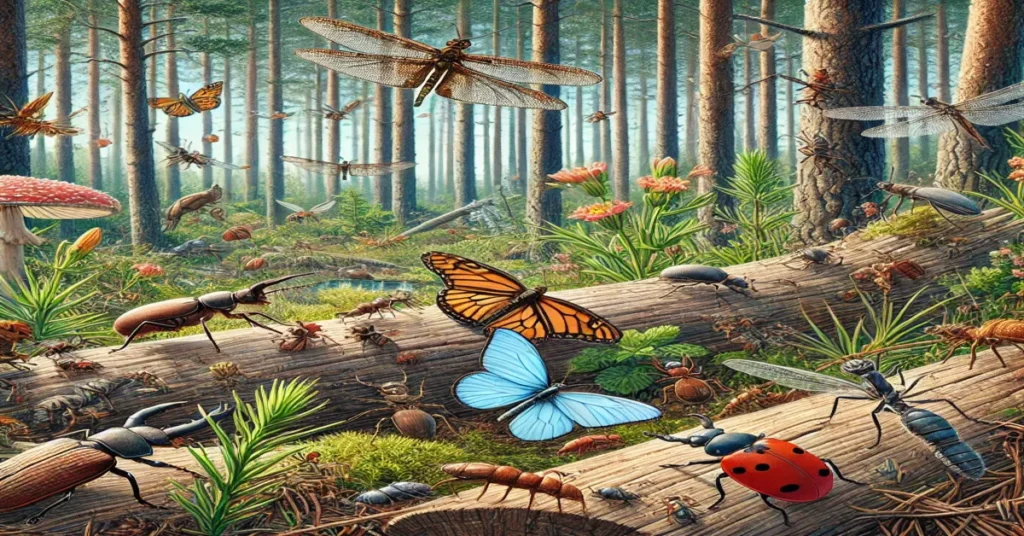
5.1. Pollinators
5.1.1. Bumblebee (Bombus spp.)
Bumblebees are important pollinators in coniferous forests and are key coniferous forest animals that ensure the survival of many plant species.
5.2. Decomposers
5.2.1. Bark Beetle (Dendroctonus spp.)
Bark beetles, though sometimes seen as pests, are vital decomposers among coniferous forest animals. They help break down dead or dying trees, contributing to nutrient cycling.
6. Aquatic Life in Coniferous Forests
The lakes, rivers, and streams in coniferous forests provide habitats for a variety of aquatic coniferous forest animals.
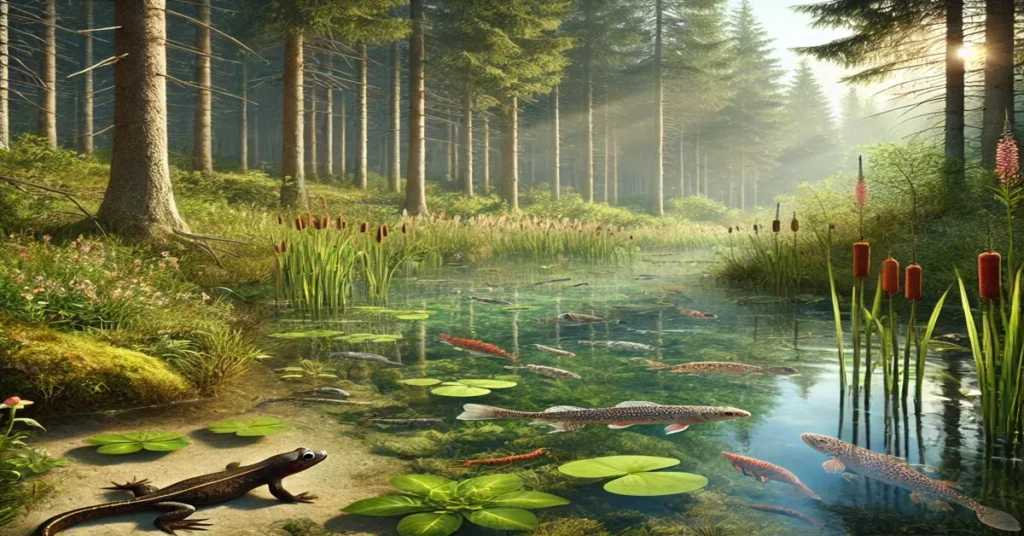
6.1. Fish
6.1.1. Brook Trout (Salvelinus fontinalis)
Brook trout are cold-water fish and a key species among aquatic coniferous forest animals. They require clean, well-oxygenated water and are sensitive to changes in water quality. As one of the more sensitive coniferous forest animals, brook trout serve as indicators of the health of aquatic ecosystems within these forests. Their presence signals clean, healthy water, while their absence can indicate pollution or habitat degradation.
6.1.2. Arctic Grayling (Thymallus arcticus)
Arctic grayling are another species of fish that thrive in the cold waters of coniferous forest streams and lakes. As one of the cold-water coniferous forest animals, they feed on aquatic insects and smaller invertebrates. Like brook trout, they rely on pristine water conditions and are highly sensitive to environmental changes, such as rising water temperatures or sedimentation due to logging or development.
6.2. Amphibians in Aquatic Habitats
6.2.1. Spotted Salamander (Ambystoma maculatum)
The spotted salamander is an amphibian that relies on the vernal pools and ponds found in coniferous forests for breeding. Like many other coniferous forest animals, they emerge from hibernation in the spring to mate and lay eggs in these temporary pools, which form from melted snow and spring rains.
Their life cycle is closely tied to these aquatic habitats, and any disruption to these water bodies—such as changes in precipitation patterns due to climate change—can have severe consequences for their populations.
6.2.2. Northern Leopard Frog (Lithobates pipiens)
Northern leopard frogs are another amphibian species found in the ponds and wetlands of coniferous forests. These frogs are key coniferous forest animals, contributing to insect population control by feeding on a variety of invertebrates. Like other amphibians, they are highly sensitive to environmental changes, particularly pollution and habitat loss, making them important indicators of wetland health within coniferous forests.
7. Environmental Threats Facing Coniferous Forest Animals
Coniferous forests, like many ecosystems around the world, are facing numerous environmental threats that could have devastating effects on the coniferous forest animals that inhabit them. Climate change, habitat destruction, and pollution are among the most pressing concerns.

7.1. Climate Change
Climate change poses a significant threat to coniferous forest animals. Rising temperatures, altered precipitation patterns, and increased frequency of wildfires are changing the structure and function of these forests. Many coniferous forest animals that are specially adapted to cold climates may struggle to survive as their environment warms.
For example, the snowshoe hare, which relies on seasonal camouflage to avoid predators, is increasingly mismatched with its environment due to less predictable snow cover. Similarly, species like brook trout and Arctic grayling, which depend on cold, clean water, are at risk due to rising water temperatures and changing water flows in their habitats.
7.2. Habitat Loss
Habitat loss is another critical threat to coniferous forest animals. Logging, deforestation, and urbanization are reducing the amount of available habitat for wildlife. Old-growth forests, in particular, are home to many species that rely on specific structures for survival, such as cavity-nesting birds or large mammals that need extensive territories.
Habitat fragmentation caused by roads, development, and other human activities can further isolate populations of coniferous forest animals, making it more difficult for them to migrate, find food, and reproduce.
7.3. Pollution and Chemical Contamination
Pollution, particularly in the form of pesticides, herbicides, and industrial runoff, can have devastating effects on coniferous forest animals, particularly aquatic species. Fish like brook trout and amphibians like the spotted salamander are highly sensitive to water pollution, and even small amounts of contamination can disrupt entire ecosystems.
Insects, which play critical roles as pollinators and decomposers in coniferous forests, are also vulnerable to chemical exposure. Declines in insect populations can have ripple effects throughout the food chain, affecting birds, mammals, and other species that rely on them for food.
8. Conservation Efforts for Coniferous Forest Animals
In light of the many threats facing coniferous forest animals, conservation efforts are crucial for protecting these species and ensuring the long-term health of the ecosystem. Various strategies are being implemented to address the challenges posed by climate change, habitat loss, and pollution.
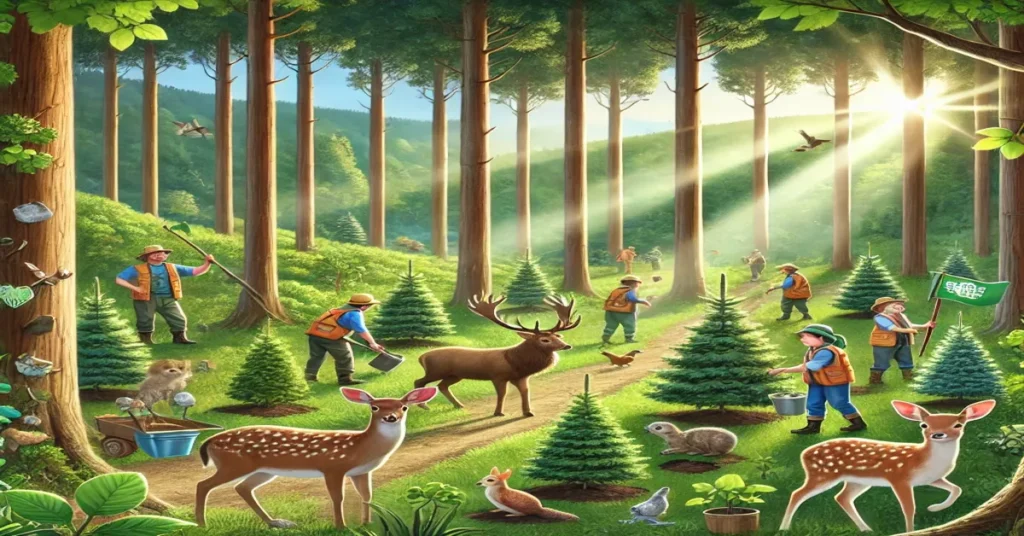
8.1. Protected Areas and Wildlife Reserves
One of the most effective ways to conserve coniferous forest animals is by establishing protected areas and wildlife reserves. These designated regions help preserve critical habitats, allowing wildlife to thrive without the pressures of human development or resource extraction. In countries like Canada and Russia, large areas of coniferous forests have been set aside as national parks or reserves, providing safe havens for many species.
8.2. Reforestation and Sustainable Forestry Practices
Reforestation efforts, particularly in regions affected by logging or wildfires, are essential for restoring coniferous forest habitats and supporting coniferous forest animals. Planting native tree species and promoting sustainable forestry practices can help mitigate the impacts of deforestation and ensure that the forests remain viable for future generations of wildlife.
Sustainable forestry practices, such as selective logging or maintaining buffer zones around sensitive areas, can also help protect the habitats of coniferous forest animals while allowing for responsible resource use.
8.3. Wildlife Monitoring and Research
Monitoring the populations of coniferous forest animals is another key component of conservation efforts. By tracking the health and numbers of species like moose, wolves, and migratory birds, scientists can better understand how these populations are responding to environmental changes and identify potential threats before they become critical.
Citizen science programs and wildlife monitoring initiatives also provide valuable data that can inform conservation strategies and policy decisions aimed at protecting coniferous forest animals.
8.4. Pollution Reduction and Climate Action
Reducing pollution and addressing climate change are essential for protecting coniferous forest animals. Governments, industries, and individuals must work together to minimize emissions, reduce the use of harmful chemicals, and promote sustainable land-use practices.
Efforts to curb greenhouse gas emissions, transition to renewable energy sources, and implement climate adaptation strategies can help mitigate the impacts of climate change on coniferous forest animals and their habitats.
Conclusion: The Importance of Coniferous Forest Animals
Coniferous forest animals are integral to the health and stability of their ecosystems. From large mammals like moose and brown bears to small birds, amphibians, and insects, these species play vital roles in maintaining the balance of coniferous forests. However, the environmental challenges posed by climate change, habitat loss, and pollution threaten their survival.
Conservation efforts, including protected areas, reforestation, and pollution reduction, are critical to ensuring that coniferous forest animals continue to thrive. By taking action now, we can help protect these species and preserve the unique and valuable ecosystems of the coniferous forest for future generations.

